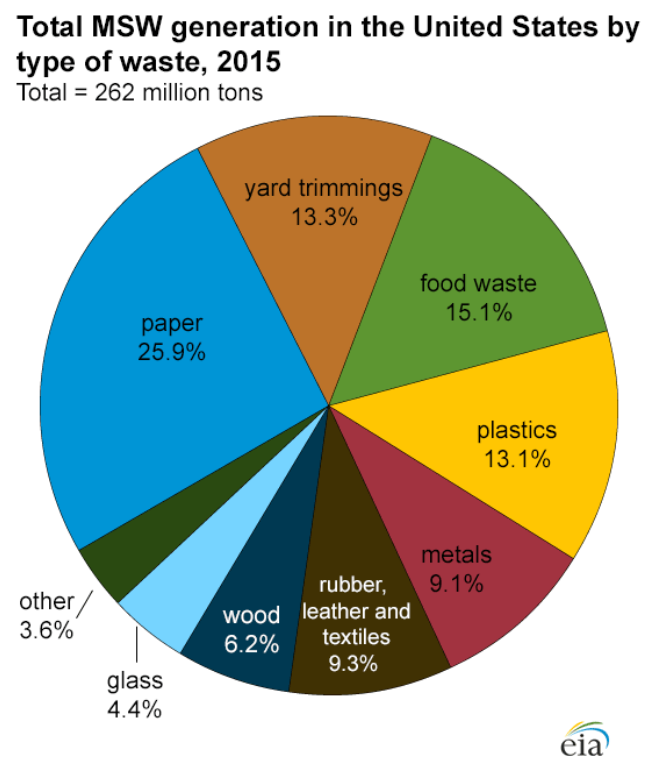
Bioenergy Technologies Office
August 28, 2019
Waste-to-Energy from Municipal Solid Wastes Report Released!
In the United States, municipal solid waste (MSW) is both a potentially valuable resource and often a significant disposal problem in many locations. The United States produced more than 260 million tons of MSW in 2015. This equates to roughly 4.4 pounds per day per person.1

The U.S. Department of Energy’s Bioenergy Technologies Office (BETO), within the Office of Energy Efficiency and Renewable Energy (EERE), conducted an assessment of potential research and development (R&D) activities that could improve the economic viability of various municipal solid waste-to-energy options. These include: developing waste preprocessing and handling strategies to reduce feedstock variability of MSW streams; reducing operating costs and increasing revenues in existing incinerator facilities; and enhancing economic viability of existing anaerobic digestion facilities.
In the Waste-to-Energy from Municipal Solid Wastes Report, DOE identifies several R&D opportunities for cost-competitive waste-to-energy facilities: applying gasification technologies to sorted MSW to produce a syngas intermediate; lowering capital costs of next generation anaerobic digestion systems that make high-value products; converting sorted-MSW to biocrude and derivative fuels; and enhancing techno-economic viability of processes for currently unrecycled plastics.
Read more about BETO’s findings and the challenges and opportunities of MSW.
1 EPA. 2016. "Municipal Solid Waste." https://archive.epa.gov/epawaste/nonhaz/municipal/web/html/. Accessed June 6, 2018.
Learn more about EERE on Facebook and follow Assistant Secretary Daniel Simmons on Twitter.
View in browser
|